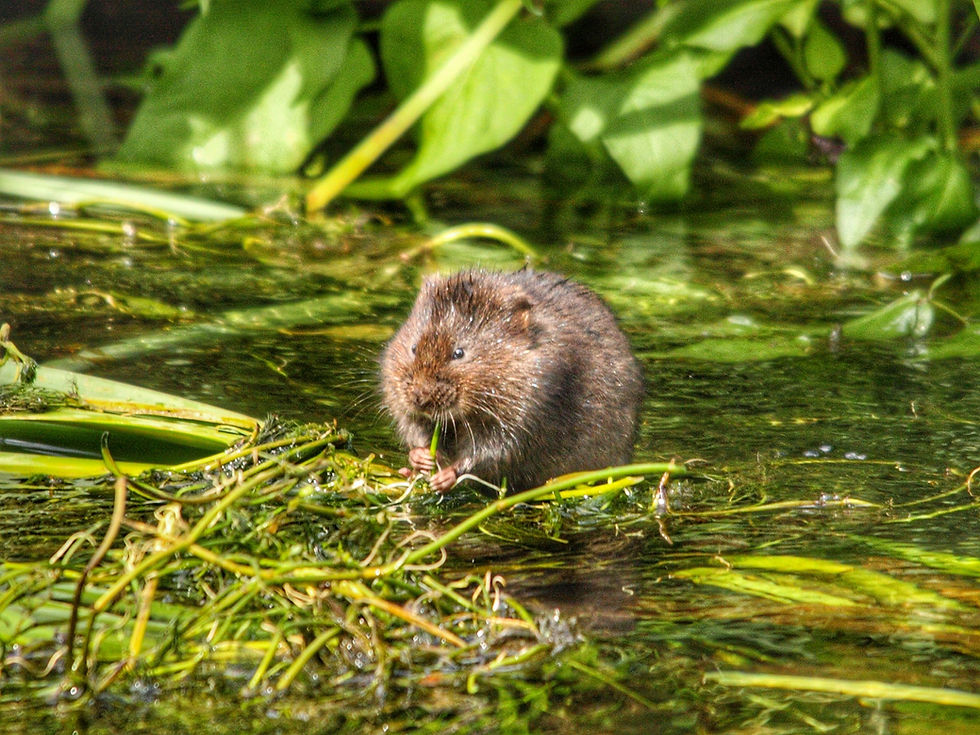HELP US CELEBRATE WORLD PEATLANDS DAY!
- Broads Society

- Jun 2
- 4 min read
Nicola Hems
The Broads are recognised internationally as one of Europe’s most important wetlands, primarily for carbon storage and biodiversity. The Broads Society contributed to the preparation of a recently published Broads Nature Recovery Strategy, which, among many other targets, aims to restore 2000 ha of damaged peat in the Broads by 2050 – an ambitious goal that requires public support. World Peatlands Day is an annual global event observed on 2 June to raise awareness about the significance of peatlands and their responsible management. It was launched by the International Peatland Society in 2019.
What are peatlands?
Peat is formed from partly decayed plant material that can accumulate in waterlogged conditions over thousands of years. Peatlands make up 10% of land in the UK and 3% of the world in total. They are known by different names – bog, swamp, mire, and fen, for example – and appear in myth and legend as strange, otherworldly environments.

So why are peat landscapes important?
Peat landscapes support many specialized insects, animals and plants, one being the Swallowtail butterfly, and this is largely why the Norfolk Broads is so famous for its biodiversity. The plants that inhabit peatlands are often unique and fragile.

In total, peatlands store around 30% of the global carbon. That’s more than twice the amount of carbon stored in the world’s forests.
Peat has been dug, cut and dried for millennia for use as a fuel. Peat was originally dug by hand, but the process has become more mechanized to the detriment of the landscape. Peat is still extracted for fuel and for use in the horticultural industry. Peatlands are also drained, and the rich soil that remains supports traditional agriculture and farming.
However, digging and draining releases the carbon that was stored in peat, exacerbating climate change. An intact peatland can act as an efficient carbon sink. When they dry out, peatlands cannot lock carbon in their depths. Instead, they start to emit it. Every hectare of drained peatland emits two tonnes of carbon every year.
A peat landscape can also slow the flow of rainwater, helping to prevent rivers flooding further downstream. Peatlands support livelihoods, tourism and agriculture. The World Peatlands Day website states that, “Their restoration and rehabilitation is one of the top priorities in the 2020s. Any use of peatlands, including conservation, must be based on the latest science and experience.”
Okay. Bogs are important. But why is World Peatlands Day relevant to the Broads?
The Broads are part of a fenland landscape and are fed by rain and groundwater. Their higher nutrient level can support reed and sedge, which are still important by-products of this wet landscape. Most peat is formed from reed, but the Broads also contain brushwood peat, which is formed from decaying trees like alder.
Peat played a key part in the creation of the Broads, as the lakes we know, and love today are not natural. They are flooded ancient and medieval peat diggings that were abandoned from the 1400s due to rising sea levels, the shortage of labour, and the availability of coal, which meant the extraction of peat for fuel was no longer economically viable.

Today, in the Broads National Park, nearly a quarter of the deep peat soils are drained for agriculture, which releases greenhouse gases. Around one million tonnes of carbon have been lost from the Broads in the past 40 years.
What can I do to help protect the peatlands we have left?
Firstly, if you are a gardener, only buy peat free compost! Soon, peat will be banned from compost, so let’s get used to it now.
Secondly, there are projects in Europe, America and in the UK to re-wet peatlands and grow crops that naturally prefer swampy conditions. This form of agriculture is called paludiculture. Paludiculture involves rewetting and using the land to grow water-based crops such as reeds and sedges, which can be used to produce fibres, building materials and horticultural products. They can even be used for biomass fuel, as in past centuries. Paludiculture is a sustainable alternative to drainage-based agriculture and is intended to
store carbon in peatlands.

The Broads Authority’s Farming in Protected Landscapes programme has provided farmers with funding to develop nature recovery projects, climate resilient businesses, heritage conservation, and better access for the public to get out and enjoy nature. As part of this scheme, the Broads Peat Partnership focuses specifically on drained deep peat, engaging with farmers to recreate peat-forming habitats.

Thirdly, why not find out more about your local peatlands, its plants and animals? Visit them if you can. By understanding our local landscapes, we can all contribute to their conservation and protection, ensuring they thrive in the future.
Where can I find out more?
Have a look at Natural England’s new peat map. It shows the peatlands in England and their current condition. The aim is to help inform the management of peatlands and to accurately calculate the amount of greenhouse gas emissions.
Broads Authority’s Farming in Protected Landscapes
Author: Nicola Hems MA was, until recently, Curator at the Museum of the Broads, where she researched, wrote, and curated the 2024 exhibition, Digging, Draining and Drenching - the Story of Peat in the Broads, which was funded by the Broads Authority’s Farming in Protected Landscapes programme.





Comments